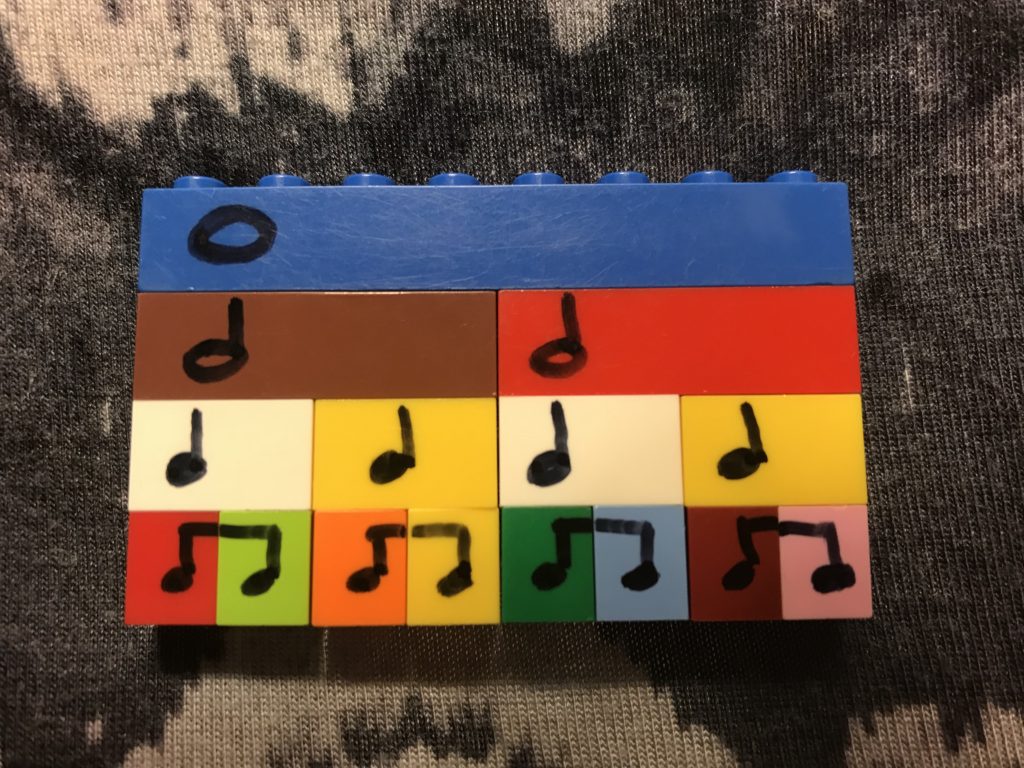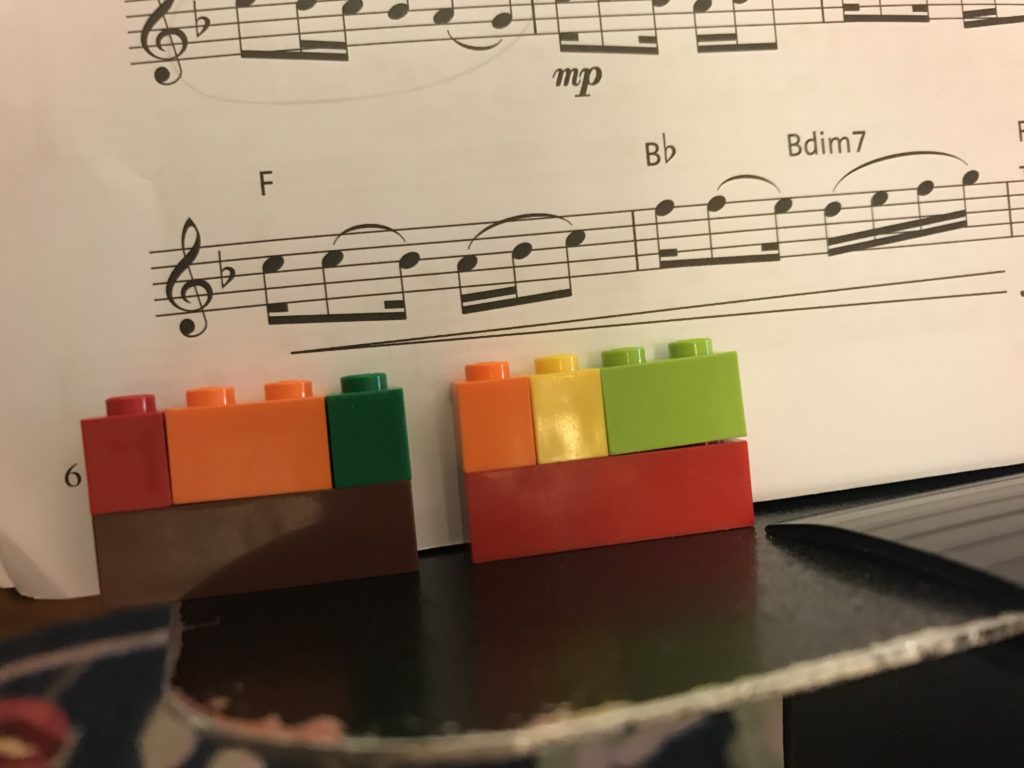Lego Rhythms: Building Better Musicians
- Marlene
- Blog, flute, Uncategorized
- No Comments
Lego Rhythms: Building Better Musicians
Lego Blocks Are a Tool for Learning Rhythms
I’m always looking for new ways to teach rhythm to students of all levels. In a previous blog, I talked about using silly words to teach rhythm. An another, I talked about the connections between math and rhythm. In still another, I showed how I like to mark tricky rhythms. It’s something I talk about a lot in lessons. Moreover, I think tackling rhythmic literacy from many different modalities (visual, kinesthetic, aural) is helpful to my students.
Lego blocks are particularly good because most of my students are very familiar with them, having some knowlege of how they stack together from hours of play. The blocks are a “native technology” for them. Furthermore, the blocks engage their kinesthetic and visual learning modes.
Rhythm Pyramid Modeled in Lego Blocks
Using Lego blocks to model rhythm was inspired by images and blogs I saw online including this one and this one.
Here’s the Lego wall I made to show the “rhythm pyramid” where the whole note is represented by a 8×1 block and the eighth notes are 1×1 blocks. (If you want to learn more about how Lego blocks are named, check out this website.)
Because these bricks can be easily taken apart and reassembled, this makes a fun game for young students. Disassemble the rhythm pyramid, scramble the blocks, and ask the student to re-assemble. This is the perfect opportunity to talk about how there are two eighth notes in every quarter note, two quarter notes in a half note, and so forth. Bonus: how many eighth notes equal one half note? one whole note?
Lego Rhythms for the Intermediate Student
I have two students learning ragtime pieces. These pieces contain complicated rhythms, but Lego blocks have been helpful for learning them. Note that before starting to work with Lego blocks on the difficult rhythms, these students had a good understanding of the rhythm pyramid above. Additionally, these students had modeled simpler rhythms.
In the example below, the 1×1 blocks represent sixteenth notes and the 1×4 base blocks on which the rhythms are built represent one quarter note.
After the student created these models, I ran my finger along the top studs (the “bumps” on the top of the bricks) and sang the rhythm. Then I had the students repeat, holding the block in their hand, with an even speed across the studs.
More Uses for Lego Rhythm Modeling
Lego bricks can be used for modeling compound meters like 3/8 and 6/8 also. The smallest 1×1 block may be the eighth note or the sixteenth note depending on the complexity of the rhythms. Build the rhythms on larger blocks that may be 3×1, 6×1, 9×1, or 12×1. The system isn’t perfect and will be impossible if the rhythms are very complicated with dotted rhythms or shifting subdivisions (as when triplets and sixteenth notes are mixed.) However, for the majority of rhythms, this system of Lego modeling will be very helpful.


No comments.